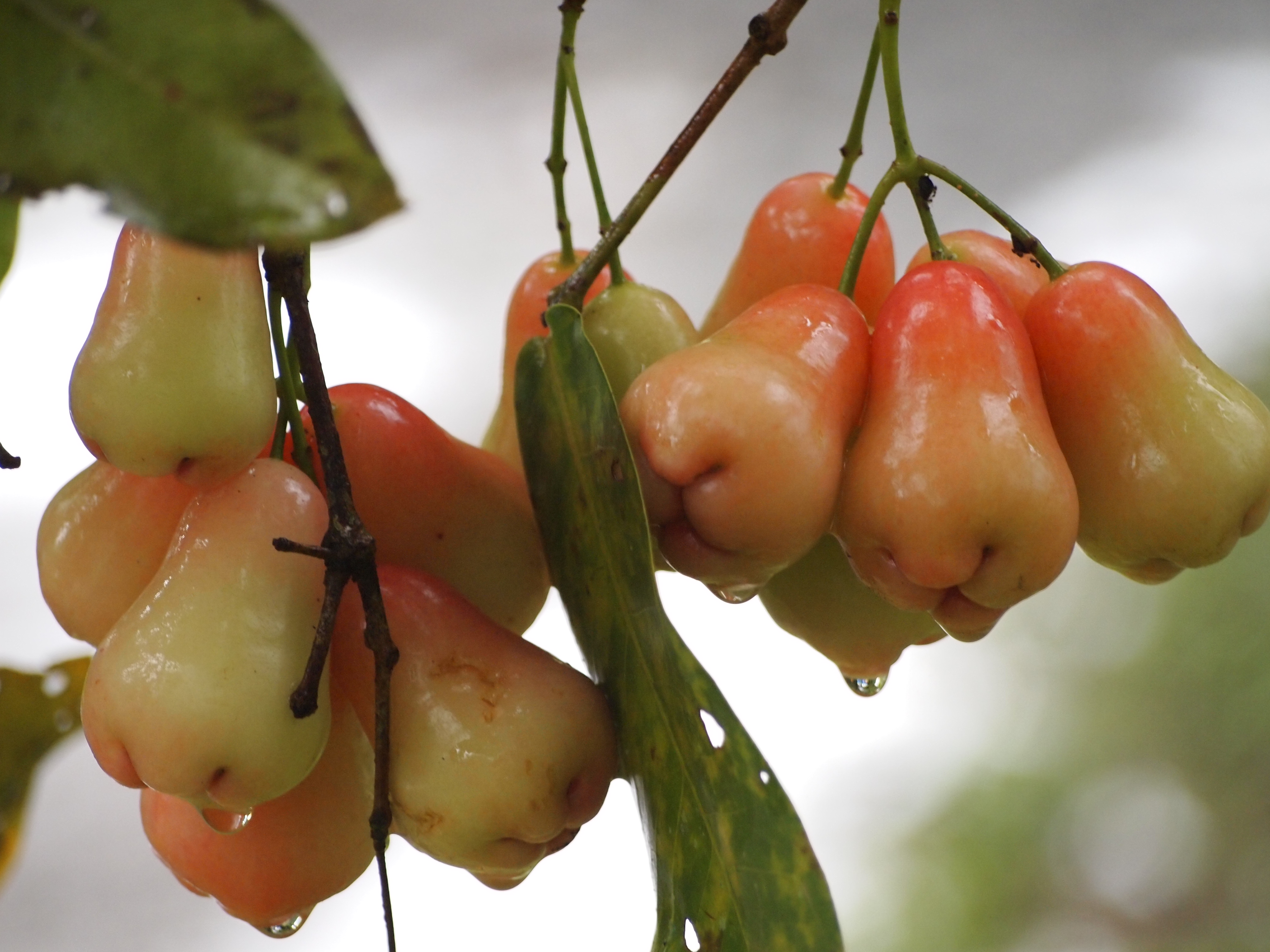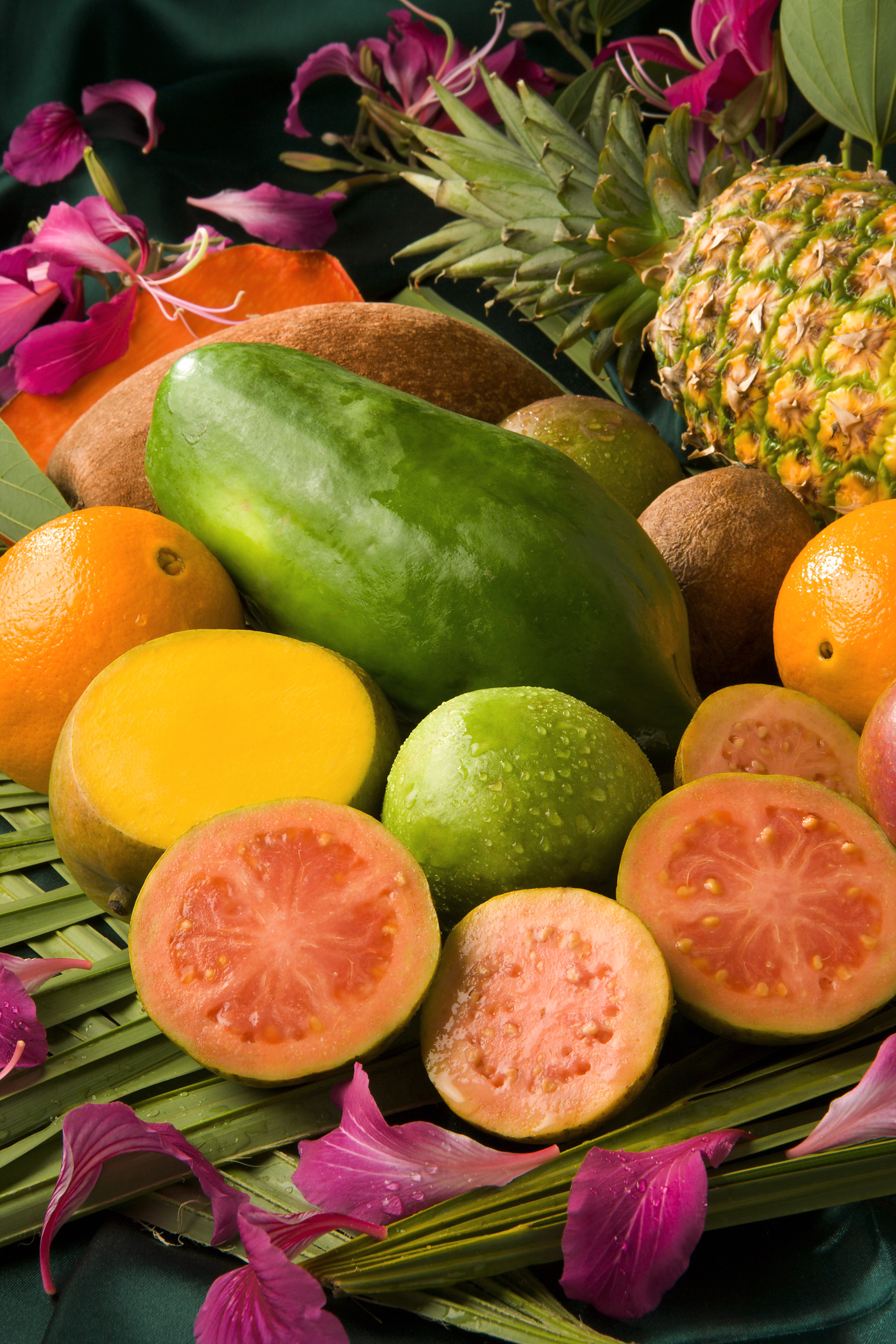|
Rose Apple
Rose apple may refer to: * ''Angophora costata'', a common woodland and forest tree of Eastern Australia * Various Syzygium species, especially the following: **''Syzygium aqueum'', Watery rose apple **''Syzygium jambos'', Rose apple or jamb **''Syzygium malaccense'', Malay rose apple **''Syzygium samarangense'', Java rose apple Parasites Rose apples are one of the most common hosts for fruit flies like ''A. suspensa'', which will lay their eggs in overripe or spoiled rose apples. The larvae of these flies will then consume the fruit in order to gain nutrients until they can proceed into the pupa stage. This parasitism has led to millions in economic costs for nations in Central America. File:Starr 070321-6134 Syzygium malaccense.jpg , fruit of ''Syzygium malaccense'' File:Wax apple.png , fruit of ''Syzygium samarangense ''Syzygium samarangense'' is a species of flowering plant in the family Myrtaceae, native to an area that includes the Greater Sunda Islands, Malay Penin ... [...More Info...] [...Related Items...] OR: [Wikipedia] [Google] [Baidu] |
Syzygium Jambos
''Syzygium jambos'' is a species of rose apple originating in Southeast Asia and occurring widely elsewhere, having been introduced as an ornamental and fruit tree.Janick, Jules. Paull, Robert E. The Encyclopedia of Fruit & Nuts. Publisher: CABI 2008. Description ''Syzygium jambos'' is a large shrub or small-to-medium-sized tree, typically high, with a tendency to low branching. Its leaves and twigs are glabrous and the bark, though dark brown, is fairly smooth too, with little relief or texture. The leaves are lanceolate, broad, long, pointed, base cuneate with hardly any petiole, lively red when growing, but dark, glossy green on attaining full size. The flowers are in small terminal clusters, white or greenish white, the long, numerous stamens giving them a diameter of . In temperate regions the tree is summer-flowering. The fruit is shaped like some kinds of guava; in fact, the fruit is so like the guava in appearance that people unfamiliar with it may mistake i ... [...More Info...] [...Related Items...] OR: [Wikipedia] [Google] [Baidu] |
Angophora Costata
''Angophora costata'', commonly known as Sydney red gum, rusty gum or smooth-barked apple, is a species of tree that is endemic to eastern Australia. Reaching in height, the species has distinctive smooth bark that is pinkish or orange-brown when new and fades to grey with age. Its lance-shaped leaves are arranged in opposite pairs along the stems, with white or creamy white flowers appearing from October to December. The flower buds are usually arranged in groups of three, followed by ribbed, oval or bell-shaped fruit. Description ''Angophora costata'' is a tree that typically grows to a height of and forms a lignotuber. It has smooth pinkish or orange-brown bark that weathers to grey and is shed in small scales. Young plants and coppice regrowth have sessile, elliptical to egg-shaped leaves arranged in opposite pairs with a stem-clasping base, long and wide. Adult leaves are arranged in opposite pairs, glossy green but paler on the lower surface, lance-shaped or curved, ... [...More Info...] [...Related Items...] OR: [Wikipedia] [Google] [Baidu] |
Syzygium
''Syzygium'' () is a genus of flowering plants that belongs to the myrtle family, Myrtaceae. The genus comprises about 1200 species, and has a native range that extends from Africa and Madagascar through southern Asia east through the Pacific. Its highest levels of diversity occur from Malaysia to northeastern Australia, where many species are very poorly known and many more have not been described taxonomically. Most species are evergreen trees and shrubs. Several species are grown as ornamental plants for their attractive glossy foliage, and a few produce edible fruits that are eaten fresh or used in jams and jellies. The most economically important species, however, is the clove ''Syzygium aromaticum'', of which the unopened flower buds are an important spice. Some of the edible species of ''Syzygium'' are planted throughout the tropics worldwide, and several have become invasive species in some island ecosystems. Several species of ''Syzygium'' bear fruits that are edible for ... [...More Info...] [...Related Items...] OR: [Wikipedia] [Google] [Baidu] |
Syzygium Aqueum
''Syzygium aqueum'' is a species of brush cherry tree. Its common names include watery rose apple, water apple and bell fruit, and ''jambu'' in several Indian languages. The tree is cultivated for its wood and edible fruit. The fruit is a fleshy whitish-pinkish to yellowish-pinkish or red berry which is bell shaped, waxy and crisp. ''Syzygium aqueum'' is native to tropical Asia and Queensland. The tree requires heavy rainfalls and can survive in tropical habitats, up to 1600m from sea level. rench, Bruce R. 1989. ''Food plants of Papua New Guinea : a compendium. In the Philippines, it is locally known as ''tambis'' and is often confused with ''macopa'' (''Syzygium samarangense''). The wood is hard and can be used to make tools. The bark of the tree is sometimes used in herbal medicines. It is grown in orchards and gardens and parks as an ornamental plant Ornamental plants or garden plants are plants that are primarily grown for their beauty but also for qualities such as ... [...More Info...] [...Related Items...] OR: [Wikipedia] [Google] [Baidu] |
Syzygium Malaccense
''Syzygium malaccense'' is a species of flowering tree native to tropical Asia and Australia. It is one of the species cultivated since prehistoric times by the Austronesian peoples. They were carried and introduced deliberately to Remote Oceania as canoe plants. In modern times, it has been introduced throughout the tropics, including many Caribbean countries and territories. Names ''Syzygium malaccense'' has a number of English common names. It is known as a Malay rose apple, or simply Malay apple, mountain apple, rose apple, Otaheite apple, pink satin-ash, plumrose and ''pommerac'' (derived from ''pomme Malac'', meaning "Malayan apple" in French). Despite the fact that it is sometimes called the Otaheite cashew, it is not related to cashew. While cashew nuts (but not cashew fruits) may trigger allergic reactions, rose apple fruit has not been observed to do so. In Costa Rica is known as Manzana de Agua. It is found mainly in the rainy zones on the Atlantic Coast of the cou ... [...More Info...] [...Related Items...] OR: [Wikipedia] [Google] [Baidu] |
Syzygium Samarangense
''Syzygium samarangense'' is a species of flowering plant in the family Myrtaceae, native to an area that includes the Greater Sunda Islands, Malay Peninsula, and the Andaman and Nicobar Islands, but introduced in prehistoric times to a wider area and now widely cultivated in the tropics. Common names in English include wax apple, Java apple, Semarang rose-apple, and wax jambu. Description ''Syzygium samarangense'' is a tropical tree growing to tall, with evergreen leaves long and broad. The leaves are elliptical, but rounded at the base; they are aromatic when crushed. The trunk is relatively short, with a wide yet open crown starting low on the tree. The bark is pinkish-gray in color, and flakes readily. The flowers are white to yellowish-white, diameter, with four petals and numerous stamens. They form in panicles of between tree and 30 near branch tips. The resulting fruit is a bell-shaped, edible berry, with colors ranging from white, pale green, or green to r ... [...More Info...] [...Related Items...] OR: [Wikipedia] [Google] [Baidu] |
Anastrepha Suspensa
''Anastrepha suspensa'', known as the Caribbean fruit fly, the Greater Antillean fruit fly, guava fruit fly, or the Caribfly, is a species of tephritid fruit fly. As the names suggest, these flies feed on and develop in a variety of fruits, primarily in the Caribbean. They mainly infest mature to overripe fruits. While thought to have originated in Cuba, the Caribbean fruit fly can now also be found in Florida, Hispaniola, and Puerto Rico. ''Anastrepha suspensa'' is a small brown and yellow fly that is can be distinguished from similar species by the placement of the veins in the wings. This fly is a pest species and has negative agricultural and economic impacts. Due to their ability to travel great distances (over 120 km) and wide range of adaptability, ''A. suspensa'' poses risks to any fruit growing country importing fruit from the Caribbean. Description The adult fly is between 11 and 14 mm long and may appear yellow, orange, brown, or a combination of the three. ... [...More Info...] [...Related Items...] OR: [Wikipedia] [Google] [Baidu] |



